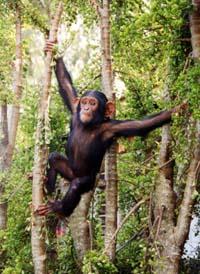Kisses for scientists

Researchers have long tried to explain why we kiss each other. One of the questions you want to answer is: Do we learn to kiss or is it natural? In fact, even though 90% of the population usually kiss, in some cultures do not kiss on their lips and show love and esteem differently.
However, the custom of kissing nine out of ten people from all over the world suggests that it is a characteristic or behavior proper to the human species, something that most scientists consider. Thus, it analyzes where evolution arose. For example, in the 1960s, the prestigious zoologist Desmond Morris, analyzing the behavior of the primates, proposed that the kiss comes from the custom of mothers to give food to the young.
In fact, chimpanzees give chewed food to their puppies, from mouth to mouth, and for it the lips of one join with those of the other. Perhaps later, the union of the lips became a way of reassuring the hungry offspring and eventually became a gesture of love and protection. According to Morris, this kind of kiss between the mother and the puppy seems to have spread in humans to express other types of love.
Source of information

Man, moreover, is not the only species that kisses. Bonobos are primates similar to people in many aspects and do not distinguish much from people: In San Diego (USA), a bonobo just brought to the zoo fired the zoo caretaker with a deep kiss.
According to scientists, kisses are an effective way to exchange information and are of great importance when choosing a couple. That can be the key for the kiss to appear in evolution (and progress). And it is that people receive more information than they expected through the kisses: olfativa, tactile, actitudinal... and all of them, together, are decisive signs of whether a person is appropriate or not for the other.
Physics and Chemistry

In kissing not everything is a matter of physics, chemistry also has room. Many animals and plants use pheromones to communicate with other members of the same species. Insects, for example, throw pheromones to warn of danger, report where the food is or show sexual attraction.
In addition to insects, some mammals also detect pheromones, such as mice and pigs. For this purpose, they have a special organ between the mouth and the nose, the bomeronasal organ. And it is clear that it has a function: in the swine farms, leanage pheromones are used to synchronize the zeal of the females. However, it is not clear whether humans can also detect pheromones.
In fact, people lack firearm organs; however, some researchers believe they have the ability to detect pheromones, and thanks to the nose, precisely. This would explain, for example, why the menstruations of women living together are synchronized, or why women prefer t-shirts that smell men compatible with their immune system.
If so, the kisses would be an unbeatable way to exchange pheromones. In addition, researchers have studied the hormonal dance that produces kisses, their influence on the brain and other organs, and other biological, physiological and neurological aspects. But still the kisses have not lost the mystery, neither for scientists nor for all.
Published in Deia
Buletina
Bidali zure helbide elektronikoa eta jaso asteroko buletina zure sarrera-ontzian











